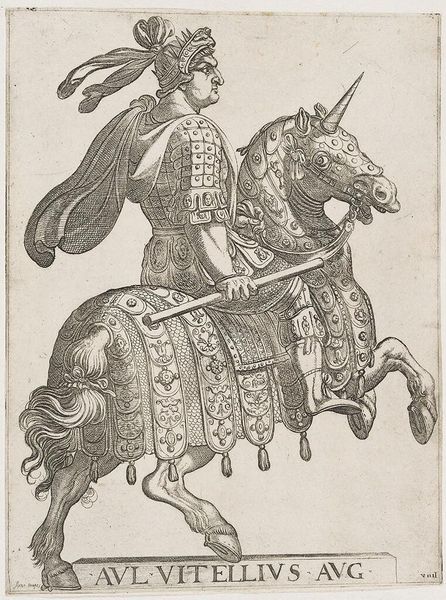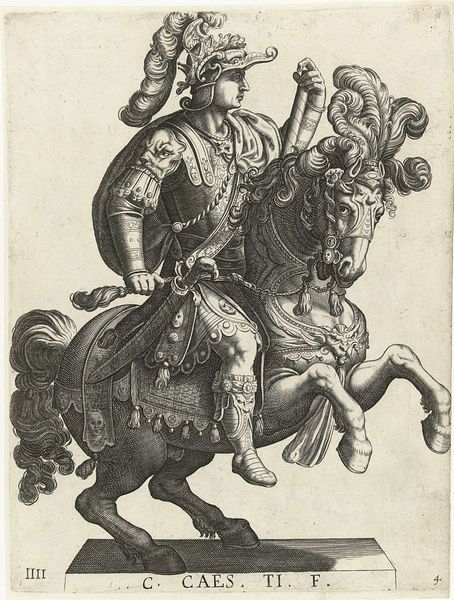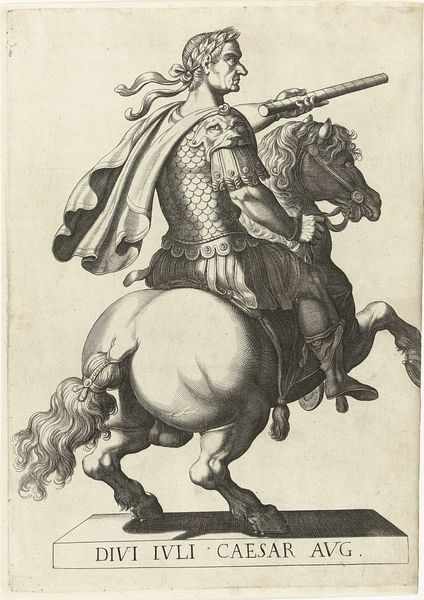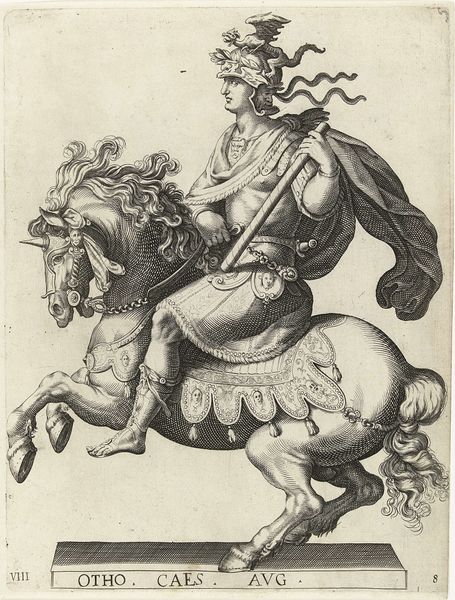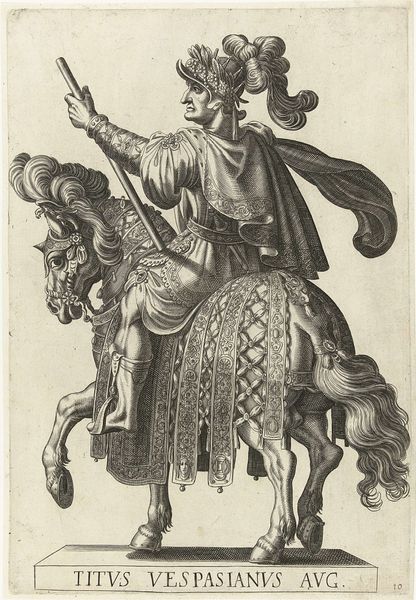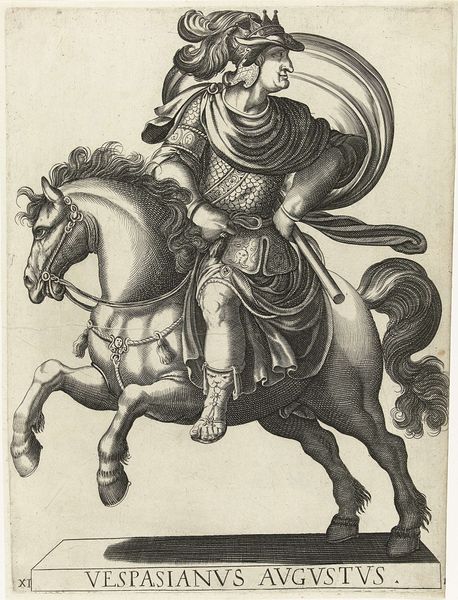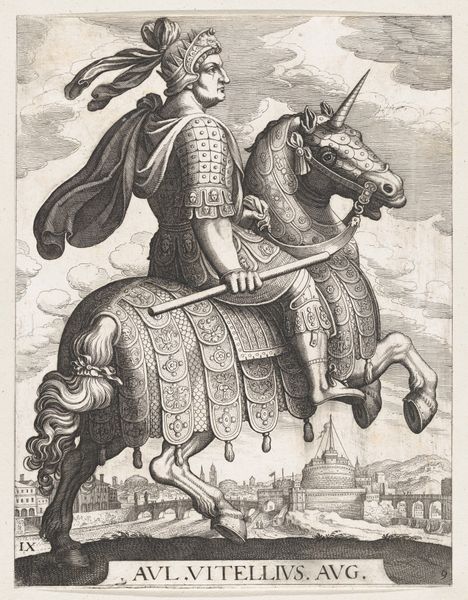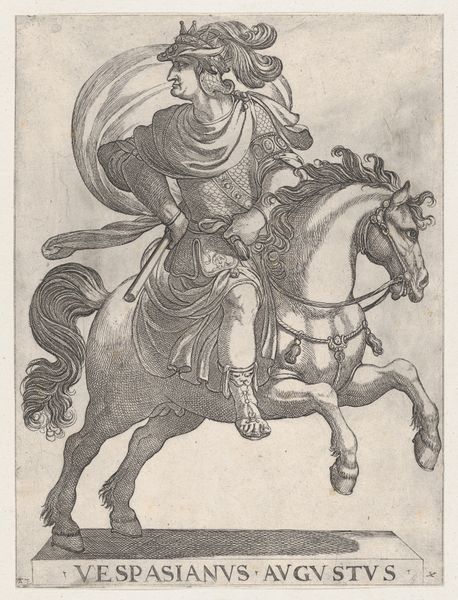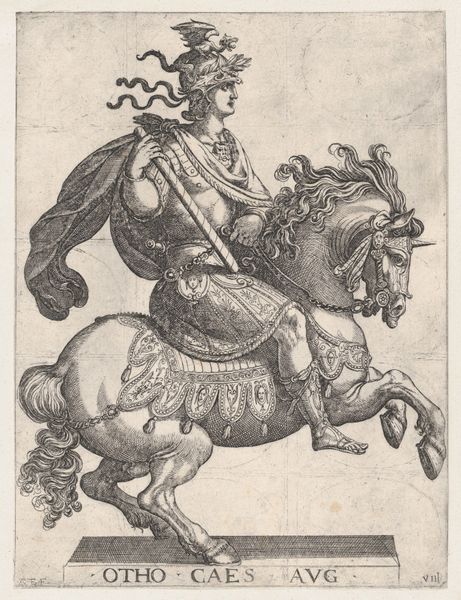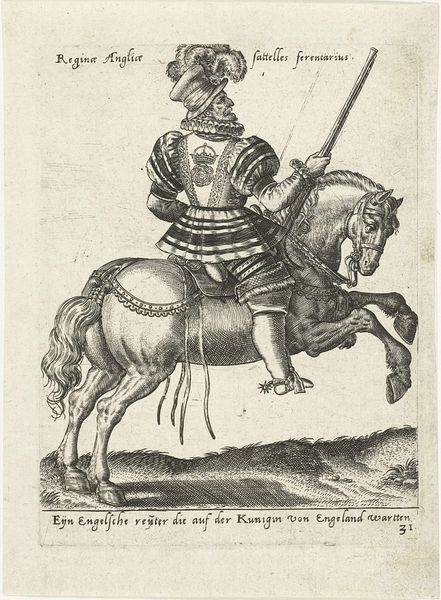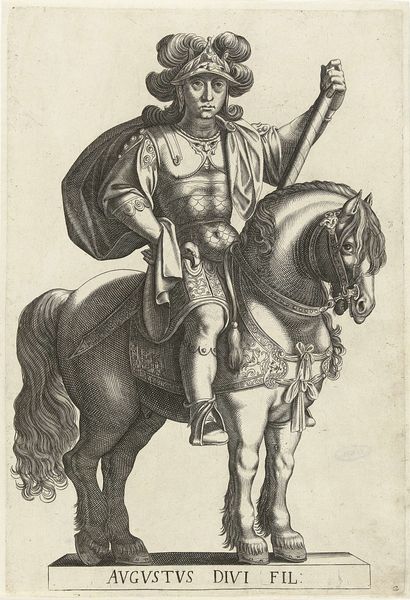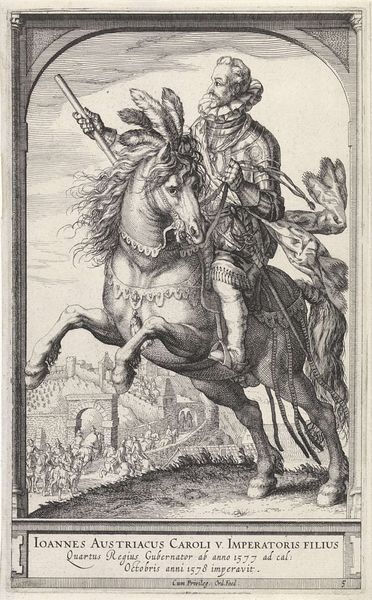
print, engraving
#
portrait
#
baroque
# print
#
old engraving style
#
figuration
#
ancient-mediterranean
#
history-painting
#
engraving
Dimensions: height 308 mm, width 210 mm
Copyright: Rijks Museum: Open Domain
Curator: What an intriguing piece! This is a print dating back to the early 17th century, sometime between 1616 and 1620, and is entitled "Equestrian Portrait of Emperor Vitellius." It comes from the hand of Laurens Eillarts and it seems to depict Vitellius riding a horse—that bears a striking resemblance to a unicorn. Editor: It's immediately imposing, wouldn't you agree? Even rendered as an engraving, there is a sense of gravity to the posture of the man and of the creature carrying him. Everything, it appears, is encased in some kind of ornamented armour. Curator: That’s right. The elaborate armour, both for the rider and mount, really leaps out, doesn’t it? Notice the level of detail Eillarts invests in these elements—all those scales, emblems, and textured surfaces speak to power, prestige, perhaps invincibility. We can certainly imagine how this visual vocabulary resonated with the audiences of that time. There's a certain idealised strength—not only of leadership but even of the empire at large. Editor: Indeed, but considering Vitellius’ short and controversial reign, I wonder about the deeper political messaging in this choice of subject. He was Emperor for less than a year and was known for his decadence and gluttony. Representing him in such noble fashion presents quite the revisionist historical portrayal! It is very curious that the horse's head features a horn—do you think the addition is intended to elevate the representation of the ruler with associations of purity and nobility? Or might there be other iconographic meanings here that signal critique rather than praise? Curator: Precisely! The inclusion of what appears to be a unicorn alters our understanding entirely, I would venture. Historically, the unicorn motif is complex, sometimes tied to Christ and purity, but it can also be a symbol of raw, untamed power, fitting, perhaps, in a subversive way with Vitellius' less-than-shining reputation. Editor: That resonates, definitely! What this piece illuminates for me, above all else, is the ways in which rulers fashion—or, more accurately, *re-fashion*—historical memory. Visual symbols are the ultimate tool for establishing lasting impressions—even, or perhaps especially, when such images directly contradict the historical reality of a figure. Curator: Yes, what we take away from this then is that a single image can conceal multiple layers, where symbolism clashes with the complexities of history. The echoes of Roman emperors and unicorns take us on unexpected routes when considering lasting power structures. Editor: Indeed.
Comments
No comments
Be the first to comment and join the conversation on the ultimate creative platform.
